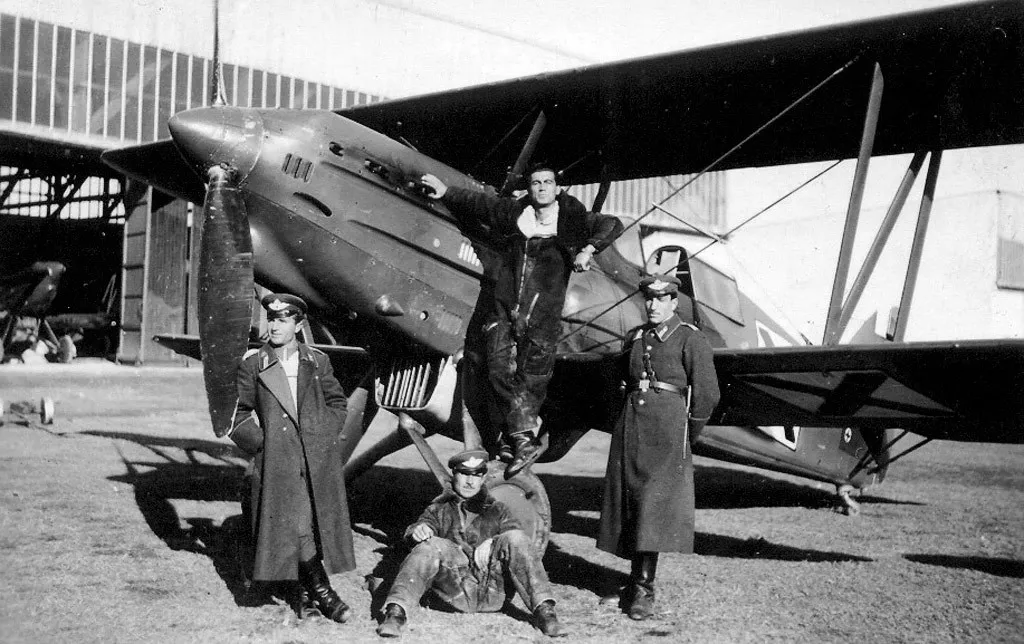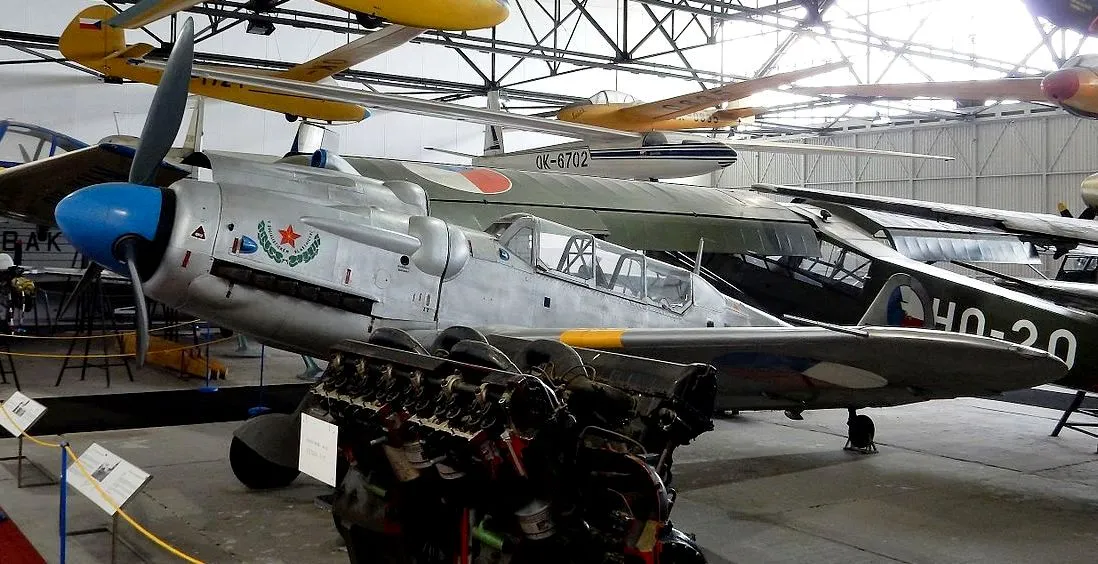Czech Republic: Warplanes of the Second World War preserved
Warplanes of the Second World War preserved in Czech Republic
The aim of this website is to locate, identify and document Warplanes from the Second World War preserved in the Czech Republic. Many contributors have assisted in the hunt for these aircraft to provide and update the data on this website. Photos are as credited. Any errors found here are by the author, and any additions, corrections or amendments to this list of Warplane Survivors of the Second World War in the Czech Republic would be most welcome and may be e-mailed to the author at hskaarup@rogers.com.
V České republice zachována válečná letadla druhé světové války
Cílem těchto webových stránek je lokalizovat, identifikovat a dokumentovat válečná letadla z druhé světové války zachovaná v České republice. Mnoho přispěvatelů pomohlo při lovu těchto letadel poskytnout a aktualizovat data na tomto webu. Fotografie jsou připsány. Veškeré chyby zde nalezené jsou autorem a jakékoli dodatky, opravy nebo dodatky k tomuto seznamu Warplane Survivors of the Second World War in the Czech by would be welcome and may be e-mail to the author at hskaarup@rogers.com.

(CZAF Photo)
Aero Vodochody A.304.
The Aero Vodochody A.304 - A Czechoslovakian medium bomber originally developed as an airliner, the A.204, however it couldn't find any buyers, and so the aircraft was adapted for military use and was accepted into service with the Czechoslovak Air Force in 1937. It was also exported to Bulgaria where it received the nickname "Pelikan". 19 were built.
For more about the Czechoslovak Air Force in the Second World War, have a look at this article by by Marcel Ludikarand others on the net:
https://fcafa.com/2014/09/18/a-short-history-of-the-czechoslovak-air-force-in-ww2-and-the-post-war-period/
https://en.wikipedia.org/wiki/Czechoslovak_Air_Force
https://aero-space.eu/2019/07/30/fighters-with-no-chance-to-fight/
Avia B.35
Warplanes of the Second World War preserved in the Czech Republic by aircraft type, serial number, registration number and location:



(CZAF Photos)
Avia B-534-IV in service ca 1940s. Produced in Czechoslovia in the 1930s, the Avia B-534 was perhaps one of the most well-known Czechoslovakian aircraft of the era.

(Dezidor Photo)
Avia B-534-IV replica, on display in the Prague Aviation Museum, Kbely, Czech Republic
A second replica Avia Bk-53), using some original parts, is displayed at the Slovak Technical Museum at Košice International Airport, Slovakia.

Avia B-35. Czechosłowacki samolot myśliwski Avia B.35.
The Avia B-35 (RLM designation Av-35) was a fighter aircraft built in Czechoslovakia shortly before the Second World War. The B.35 was designed to meet a 1935 requirement by the Czechoslovakian Air Force for a replacement for their B-534 fighter biplanes. The B.35 was an elegant, low-wing monoplane with an elliptical wing. The fuselage was constructed from welded steel tube, covered in metal ahead of and including the cockpit and fabric aft of the cockpit, while the wing was of entirely wooden construction. Rather anachronistically, the Air Force specified a fixed tailwheel undercarriage for the aircraft, in the hope that this would speed development, as the mechanism for retracting the undercarriage was not yet available.


The first prototype, the B-35/1, displayed excellent flying characteristics and high speed and was originally powered by a Hispano-Suiza 12Ydrs piston engine. The powerplant was later changed to a 12Ycrs with an identical power output, but with provision for an autocannon to be fitted between the cylinder banks to fire through the propeller hub. Testing continued until 22 November 1938, when the aircraft was destroyed in a crash that killed the Military Technical and Aeronautical Institute test pilot Arnošt Kavalec. Nevertheless, a second prototype, B-35/2, was already reaching completion, and was fitted with redesigned ailerons and flaps. It first flew on 30 December with testing beginning in earnest in February 1939. A preproduction series of ten aircraft was ordered, but before these could be built, Czechoslovakia was occupied by Germany in March 1939.


Development however was resumed under German control, with the substantially revised B.35/3 flying in August 1939. The elliptical leading edges of the wings had been replaced with straight ones, and an outward-retracting main undercarriage was fitted. This prototype was the first to actually carry its intended armament. With German markings and the registration D-IBPP, it was displayed at the Salon de l'Aéronautique in Brussels, where enough interest was generated to spur development of an improved version of the aircraft as the B.135. (Wikipedia)



(Alf van Beem Photos)
Curtiss P-40 Warhawk, Museum on the demarcation line, Rokycany, Czech Republic.
Prague Aviation Museum, Kbely



(Alf van Beem Photos)

(Alan Wilson Photo)
Ilyushin Il-2m3 Sturmovik (Nato name Bark)

(Dezidor Photo)


(Alf van Beem Photos)

(Alan Wilson Photo)
Avia B-33 (Ilyushin Il-10 Beast), Czech Air Force (Serial No. B33-5502), VU 2475.


(Dezidor Photos)


(Alf van Beem Photo)
Avia S-199 (Czech version of the Messerschmitt Bf 109G/K), (Serial No. 199178), UF 25.


(Alan Wilson Photos)


(Sam Wise Photos)

(Urfin7 Photo)


(Alf van Beem Photos)
Avia CS-199 (Czech trainer version of Messerschmitt Bf 109G), (Serial No. 199565), UC-26.


(Alf van Beem Photos)

(Rottweiler Photo)

(Alan Wilson Photo)
Avia S-92 (Serial No. S92-4), V-34. (Czech built copy of the Messerschmitt Me262A-1). This sole remaining example is in genuine Czech markings.

(Alf van Beem Photo)

(Netopyr Photo)

(Alan Wilson Photo)
Avia CS-92, Czech Air Force (Serial No. 51104), V-35 (License built Messerschmitt Me262B-1A). This sole remaining example has been painted in false Second World War Luftwaffe markings.

(Alan Wilson Photo)

(Netopyr Photo)
Lavochkin La-7, "White 77".

(Andrej-airliner Photo)
North American P-51D Mustang (Serial No. 45-11540), "Excalibur", private owner.





(Alan Wilson Photos)

(Hynek Moravec Photo)
Supermarine Spitfire Mk. IX (Serial No. TE565), NN-N. Currently on display in National Technical Museum in Prague.





